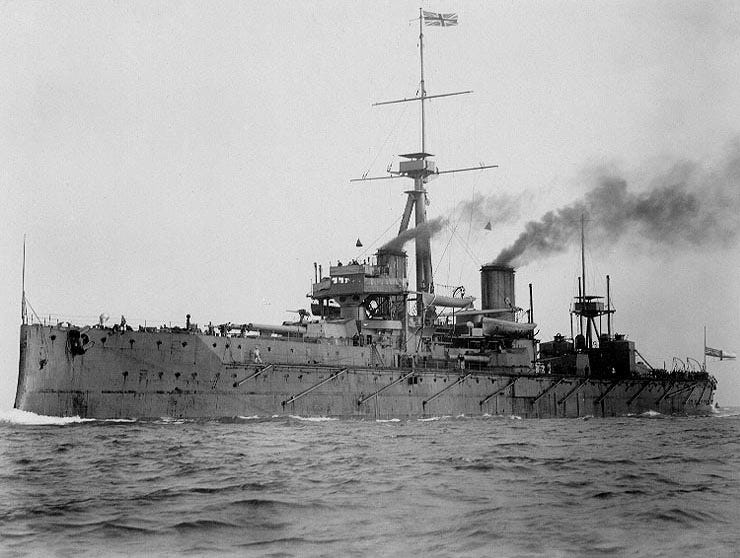By Rich Ganske
Some thoughts on what Knox & Murray’s “Dynamics of Military Revolution” teaches us…
Often confused for one another, Revolutions in Military Affairs (RMA) are much less influential than the societal-military earthquake-inducing Military Revolutions (MR). The confusion is not simply semantic, but rather crucial as RMAs have little to no influence beyond the tactical and operational levels of war. RMAs, as Knox and Murray tell us in “Dynamics of Military Revolution,” are no “substitute for strategy.” Understanding the nature of RMAs provides vital perspective on the extent of their influence upon the political and strategic context. Finally, having this proper perspective within the strategic hierarchy, one is better armed to sort valuable insight on changes in the strategic landscape from insight that is fundamentally flawed.
What is a Revolution in Military Affairs?
Military organizations embark upon an RMA by devising new ways of destroying their opponents. To do so, they must come to grips with fundamental changes in the social, political, and military landscapes; in some cases they must anticipate those changes. Revolutions in military affairs require the assembly of a complex mix of tactical, organizational, doctrinal, and technological innovations in order to implement a new conceptual approach to warfare or to a specialized sub-branch of warfare.
Why do Revolutions in Military Affairs matter?
Polen, Stukas 1939
(German Federal Archives)
There are several important considerations of RMAs here for the military professional. First, RMAs are rarely predicted. In the 1990s, most immediately following Operation Desert Storm, RMAs became the topic of much discussion that was, on the whole, largely ahistorical and ineffectual. The most stillborn of RMA ideas was that new tactical and technological dyads would usher in certain success at the operational and/or strategic levels of war in a new era. In contrast, Knox & Murray’s edition effectively and repeatedly emphasizes that the lessons of history are inconsistent with the idea of technological supremacy as a key to victory. Equally, we should also observe here that the edition is not opposed to technological advancements—although it notes that in some cases technology becomes irrelevant sooner than other cases. Blind obsession with technological acquisition is just as imprudent as those stubborn advocates who suggest that archaic weapons are sufficient for future tactical and operational success.
(U.S. Naval Historical Center)
Second, if RMAs provide an asymmetric advantage at all depends on context, but these advantages are almost always short-lived. “Belligerents adopt innovations with a conviction proportionate to their fear,” Mark Grimsley suggests, where “new developments spread so swiftly that battlefield imbalances are usually brief.” We should note that where these advantages are provided their impacts are probabilistic and typically non-linear. Whether to embark on reducing the asymmetry or alternatively seek a different path of advantage is another matter of risk that must be considered.
Finally, RMAs are nothing if not for the people who will employ them. Wars are a human interaction; Clausewitz’s metaphor of a duel was quite apt. The tactical, organizational, doctrinal, and technological changes are nothing for want of a developed mind. “American analysts have in consequence defined revolutions in military affairs as technological-organizational asymmetries between combatants,” Dennis Showalter explains, however the “fate of French armor in 1940 and of the Arab air forces in 1967 demonstrates the uselessness of hardware without appropriate concepts for its use and competent personnel effectively organized to implement those concepts.”
So what?
There are more lessons that RMAs can provide the reader of Knox and Murray’s work, and I have not nearly listed all of the implications of this concept. However, what is most important is that readers are reminded that “revolutions in military affairs always occur within the context of politics and strategy,” and that RMAs are “less a triumph of American technology than a triumph of concepts and doctrine that rested firmly on an understanding of the fundamental nature of war.”
The professional Sailor, Soldier, Marine, and Airman must consider these concepts from Knox and Murray’s work as they trudge through the massive amounts of misinformation and data related to counterinsurgency doctrine, unmanned aerial vehicles (or “drones” as the vulgar vernacular of these times may ascribe), cyberspace operations, or even the technological and doctrinal aspects of the Joint Operational Access Concept. We should be especially warned of any ahistorical predispositions of a technological “way of war,” which by any other name are just technological epiphenomena. An historical-based perspective on Revolutions in Military Affairs, as provided in Knox and Murray’s “Dynamics of Military Revolution,” will serve you well in the next offering of doctrinal snake oil or technological marvel for the strategic problem that ails you.
Update: One should also consider, in addition to “Dynamics of Military Revolution,” Scott Stephenson’s offering in Military Review titled, “The Revolution in Military Affairs: 12 Observations on an Out-of-Fashion Idea.” He concludes, as do I, that the properly understood concept of RMAs are still useful—despite being overplayed by garrulous post-strategic (or is it anti-strategic?) wonks.



No comments:
Post a Comment